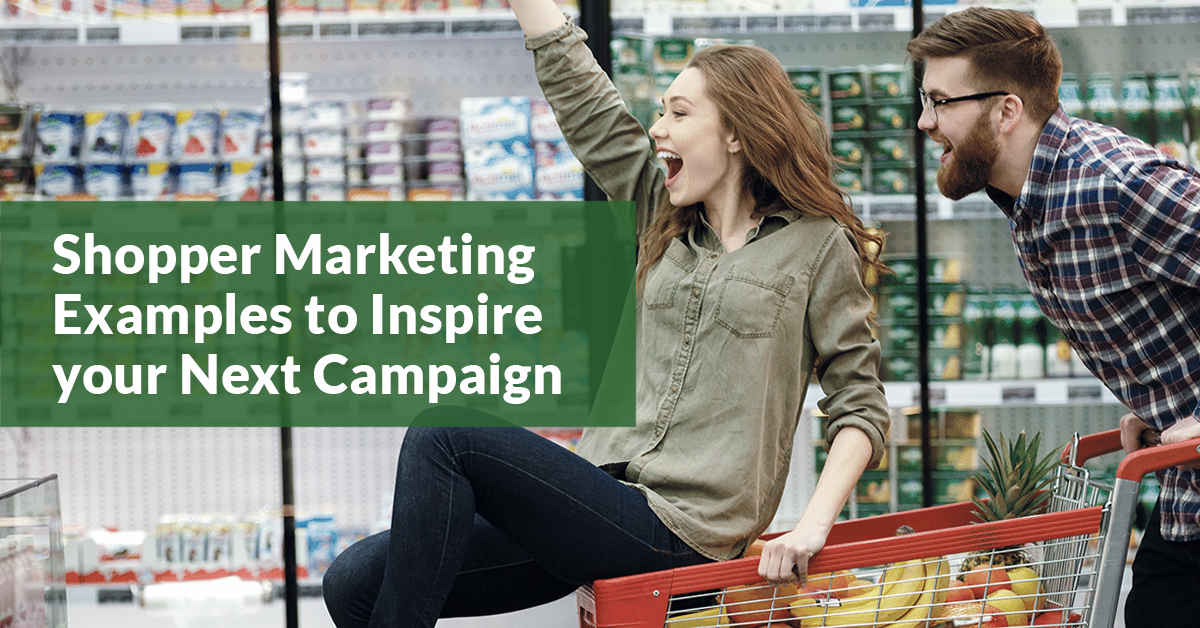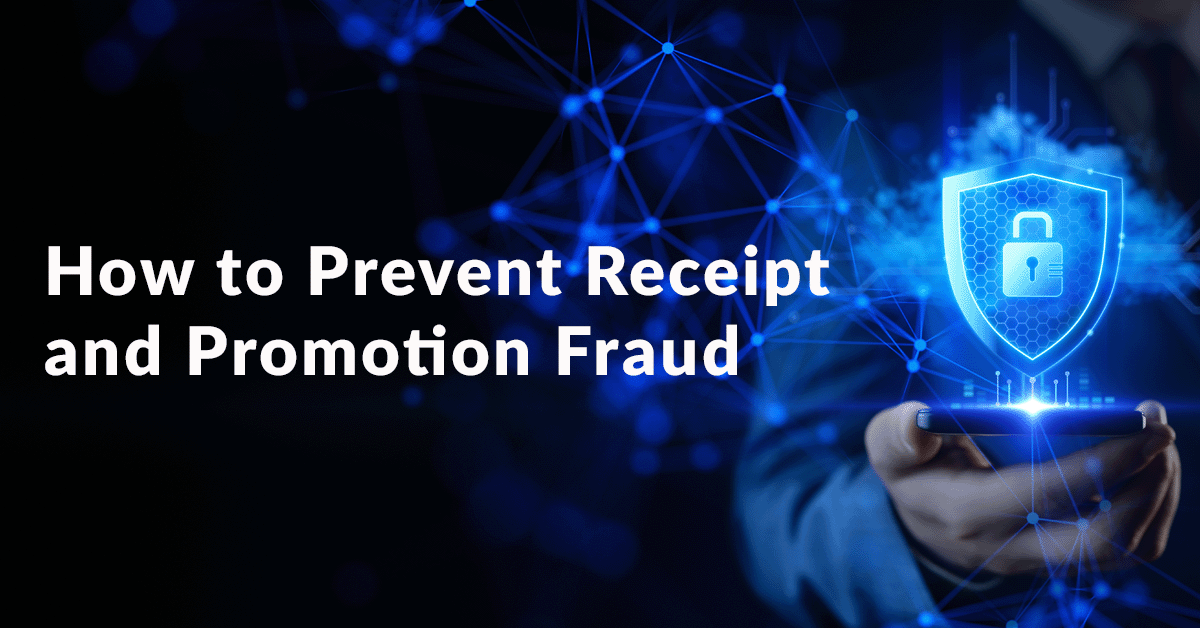The best shopper marketing campaigns succeed by influencing purchase decisions at the moment of shopping through emotional connections, memorable in-store experiences, and personalized rewards. From Coca-Cola’s Share a Coke bottles that tapped into personalization, to Starbucks’ mobile app that seamlessly integrates loyalty and convenience, the most effective strategies blend creativity with data-driven insights. Tactics such as sensory demos, engaging contests, and omnichannel touchpoints not only capture attention but also build trust and long-term loyalty. In 2025, shopper marketing remains one of the most powerful ways for brands to boost awareness, increase engagement, and drive sales.
There’s a fine balance between success and failure in shopper marketing. A campaign can make pop culture history for the right or wrong reasons. See these tips and the shopper marketing examples at the end to get inspiration for your next campaign.
Take Coca-Cola’s “Share a Coke” campaign.
It first launched in Australia back in 2011. That summer, consumers bought more than 250 million named bottles and cans in a nation of less than 23 million. Being able to sip a drink with their name on it made Coke even tastier, and the campaign has since launched in more than 70 countries. It truly connected with the hearts and minds of consumers.
Other shopper marketing campaigns don’t quite hit the mark and damage a brand’s reputation.
If you’ve ever walked past a Hollister or Abercrombie store, you might have noticed the smell of cologne. Using aromas to attract and immerse customers can be a fantastic shopper marketing tactic. Catching a whiff of their signature scents should have transported shoppers from store to beachside. Unfortunately, the balance wasn’t quite right, and customers complained about the strong smell. One group even protested as they believed it was dangerous.
Two shopper marketing examples. Two very different outcomes. How can you make your efforts a success? In this blog, we’ll explore how to use shopper marketing and consumer promotions to acquire, retain, and engage customers without leaving a bad taste in their mouths.
What is Shopper Marketing?
Shopper marketing focuses on improving the customer shopping experience and increasing product awareness in-store and online. Most shopper marketing tries to influence customers while they’re shopping.
A survey of purchase journeys conducted by Nielsen in 2023, found that 85% of purchases involve brands the customer has already tried. And 22% of consumers report feeling worried or nervous about trying a new brand. Brands don’t have an easy job to establish themselves in the market, so adopting at least some shopper marketing techniques is a great place to start.
When it comes to your customer acquisition strategy, these shopper marketing techniques can help to build trust, increase brand awareness, and convince potential customers to buy. Here are some shopper marketing campaign ideas and below this you'll find real-life shopper marketing campaign examples. For more detail, see our guide on Shopper Marketing Trends.
Eye-Catching Displays
Marketers can install end-of-aisle, freestanding, or product containers to display items. They can also use interactive, animated, or static digital displays. These are all branded and designed to draw the eye and separate the product from competitor alternatives.
Displays are a great opportunity to improve brand recognition and build loyalty.
Receipts They’ll Want to Keep
Receipts are often overlooked as purely functional. But they are an incredibly powerful marketing tool. Shopper marketers can collect and analyze online and in-store POS data to better understand customer behavior and drive sales through loyalty rewards, personalized offers, etc. If retailers have a receipt processing solution they can analyze and consolidate all purchase data down to brand and category at basket level in one place. They can use that data to better reward customers for purchases while collecting insightful data.
Reach New Audiences
CPG brands can now reach millions of new shoppers with targeted, SKU level offers redeemable online and in-store via their bank’s mobile app or website. The Snipp Financial Media Network and Bank of America alliance delivers brand-funded rewards on everyday items in categories like food, pet, and health & beauty products to consumers from within the Bank app. Brands also gain quicker insights into campaign performance and ROI.
Delectable Demos
Demos are a great way to showcase the benefits of a product to a potential customer and build interest and trust before they make a purchase.
They’re enjoyable sensory experiences, too. Customers can feel the material used to make the product, experience the taste of edible items, and get a VIP look at products outside of their packaging. If a demo impresses a customer, this creates a desire to purchase.
A Welcoming Environment
Building a positive shopping environment puts customers at ease and keeps them coming back. Small things can have a big impact on ambiance. Music choice is a great example. Recent research from Psychologist World found that customers shopping for wine were more likely to buy German wine if German music was playing, and French wine if French music was playing - even though they had no recollection of the music they were listening to. These decisions were all made subconsciously. When marketers implement strategies like this based on cognitive science and neuroscience, it can also be classified as neuromarketing.
Embrace Their Inner-Child with Contests, Sweepstakes, and Promotions
Injecting fun and urgency into the buying journey is a great way to improve the customer experience. Contests, sweepstakes, and promotions create opportunities for people to get something in exchange for engaging with a brand. And brands are likely to get something back in return – a third of entrants sign up to receive further marketing communications.
Build Excitement with Events
Shopper marketers can create demand and offer customers great value by hosting or taking part in events. For example, a stationery brand could host a back-to-school event to help parents equip their children with what they need for the new school year. Or a technology brand could discount their products for global shopping events like Black Friday and Cyber Monday. Advertising these events on social media ahead of time can help to create excitement and interest.
Snipp Tip
Shoppers are the most important part of shopper marketing. Cater to their needs and create campaigns to excite and delight them. Do that, and you’ll see results.
Why is Shopper Marketing Effective?
- It’s data-driven. Shopper marketing strategies use accurate and relevant customer data so marketers can understand shopper behavior, preferences, and habits. This lets them craft campaigns that deliver the right message at the right time and connect with their target audience. But according to Nielsen, just 26% of global marketers are fully confident in their audience data. For shopper marketing to be effective, it’s crucial to have tools that can capture and store data safely as well as provide analytics.
- It influences customers at the right time. When customers are shopping online or in-store, it’s easier to capture and hold their attention. A 2025 survey by Pragma & Statista found that 20% of respondents said they shop in physical stores because they want to acquire the desired product immediately. If they see the right campaign, offer, or competition while shopping, they’ll engage with it and will be more likely to make a purchase.
- It adds a personal touch. Marketers can personalize shopper marketing to customer preferences. Taking promotions as an example, if basket data shows a customer buys diapers and formula, you could offer a discount on baby-related products. DemandSage reported in 2025 that around 76% of consumers prefer to buy from brands that personalize their experience, while eMarketer’s 2024 research found that more than half of shoppers say a better price is the number one reason they choose to buy directly from a brand.
- It’s omnichannel. Shopper marketing tactics span the digital and physical so you can meet shoppers where they are. Send a promotion through a retail app, email about an event, create an in-store display to showcase a new product, and more. Make the most of every channel and ensure your messages are consistent so customers get a seamless experience.
Standout Shopper Marketing Examples that
Cut Through the Noise
We already mentioned the wonderful “Share a Coke” campaign that allowed consumers to find the names of their loved ones on Coke’s famous bottles and cans. But here are some more great examples of shopper marketing campaigns.
1. Starbucks Rewards App
 Starbucks connects in-store and digital experiences through its mobile app and Mobile Order & Pay feature. Customers can order drinks ahead of time, pay, customize drinks, earn loyalty rewards, reload their balance, send gift cards, and receive offers.
Starbucks connects in-store and digital experiences through its mobile app and Mobile Order & Pay feature. Customers can order drinks ahead of time, pay, customize drinks, earn loyalty rewards, reload their balance, send gift cards, and receive offers.
The brand aligns its digital channels with in-store experiences, ensuring consistency across every channel. This integrated approach demonstrates how connecting online and physical shopping interactions can support customer engagement and strengthen relationships at the point of purchase.
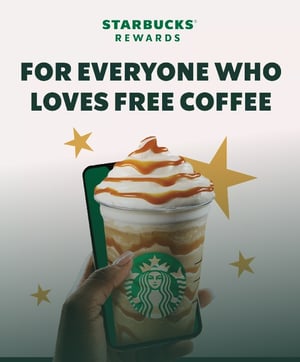
2. LEGO Star Wars at Walmart
 To boost sales of its Star Wars line during the key holiday period while strengthening its retail partnership with Walmart, LEGO offered shoppers an exclusive Gasgano’s Podracer set. Customers who spent $65 or more on LEGO Star Wars products in-store or online at Walmart could redeem the collectible, creating a strong incentive to increase basket size.
To boost sales of its Star Wars line during the key holiday period while strengthening its retail partnership with Walmart, LEGO offered shoppers an exclusive Gasgano’s Podracer set. Customers who spent $65 or more on LEGO Star Wars products in-store or online at Walmart could redeem the collectible, creating a strong incentive to increase basket size.
By tying the reward directly to purchases at Walmart, LEGO not only drove incremental sales but also reinforced its reputation for collector-worthy exclusives that excite fans. The program blended in-store and digital touchpoints seamlessly, giving shoppers a compelling reason to choose Walmart for their holiday LEGO purchases.
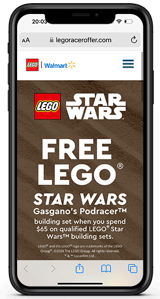
3. Vega ‘Home Gym’
 Back-to-school is one of the busiest shopping periods of the year, with heightened competition for shopper attention. In 2024, Vega tapped into this moment by linking purchases directly to a value-added reward, encouraging shoppers to buy its products both in-store and online. The approach not only reinforced Vega’s visibility at the shelf but also gave consumers a clear reason to engage with the brand during a seasonal retail peak. By connecting sales with timely shopper incentives, Vega was able to strengthen awareness and ensure its products remained front of mind in a crowded marketplace.
Back-to-school is one of the busiest shopping periods of the year, with heightened competition for shopper attention. In 2024, Vega tapped into this moment by linking purchases directly to a value-added reward, encouraging shoppers to buy its products both in-store and online. The approach not only reinforced Vega’s visibility at the shelf but also gave consumers a clear reason to engage with the brand during a seasonal retail peak. By connecting sales with timely shopper incentives, Vega was able to strengthen awareness and ensure its products remained front of mind in a crowded marketplace.

4. Gillette - Engaging the Next Generation at the Point of Purchase
![]() To engage young shoppers, Gillette partnered with Xbox to connect everyday purchases to experiences they already value. Shoppers who bought Gillette products could unlock Xbox Game Pass vouchers, bridging the gap between grooming and gaming in a way that felt natural and rewarding.
To engage young shoppers, Gillette partnered with Xbox to connect everyday purchases to experiences they already value. Shoppers who bought Gillette products could unlock Xbox Game Pass vouchers, bridging the gap between grooming and gaming in a way that felt natural and rewarding.
By aligning the brand with the passions of its audience, the campaign turned routine shopping trips into opportunities for discovery and engagement. This is a clear example of how shopper marketing can influence purchase behavior, create emotional relevance at the shelf, and strengthen long-term brand affinity.
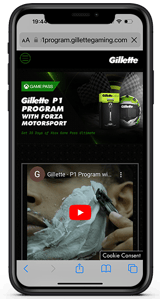
Listen to Your Customers More
To succeed at CPG shopper marketing, you first need to succeed at capturing, storing, and understanding your zero-party and first-party customer data. Once you understand your customer behavior and preferences, start to build out a shopper marketing strategy tailored to their needs.
Don’t do everything at once – pick a couple of methods to engage shoppers online and in-store, and measure your results. And use a shopper marketing tool (and learn more about shopper marketing agencies) to support your efforts. Choosing the right solution can help you to manage and automate your shopper marketing campaigns so it’s easier to deliver seamless and engaging customer experiences.
FAQs
Q: What is shopper marketing and why does it matter?
A: Shopper marketing is a strategy brands and retailers use to influence purchase decisions at the point of sale, both in-store and online. It matters because it drives sales by turning customer insights into action, strengthens brand–retailer partnerships, ensures consistent omnichannel experiences, fuels eCommerce growth, and enables personalized campaigns that resonate with shoppers.
Q: How can I measure the real impact of shopper marketing campaigns beyond just sales?
A: As a shopper marketing professional, you know sales lifts are important, but the true value is also in engagement, brand perception, and repeat purchase behavior. Using tools that track in-store interactions, receipt and basket data, redemption rates, and loyalty program participation, can give a full picture of how your campaigns drive behavior and build long-term customer loyalty.
Q: What’s the best way to integrate digital and in-store activations for maximum effect?
A: Shoppers interact across multiple touchpoints, so aligning retail media campaigns, POS promotions, and mobile engagement is crucial. Marketers often struggle with orchestration, but using a platform that consolidates real-time shopper data, analytics, and omnichannel execution ensures consistency and measurable impact at both digital and physical touchpoints.
Q: How can I quickly test which shopper marketing tactics work best for my brand?
A: Shopper marketing specialists often need fast, low-risk experiments to identify winning tactics. Running small-scale in-store or digital activations, using A/B testing on promotions, or leveraging retail media networks for targeted offers can reveal what resonates with shoppers. These pilot campaigns can then be scaled with confidence once the most effective strategies are identified.
Interested in running a shopper marketing program that truly connects with your audience? Connect with us here to learn how we can help you engage shoppers and drive sales across all channels.


